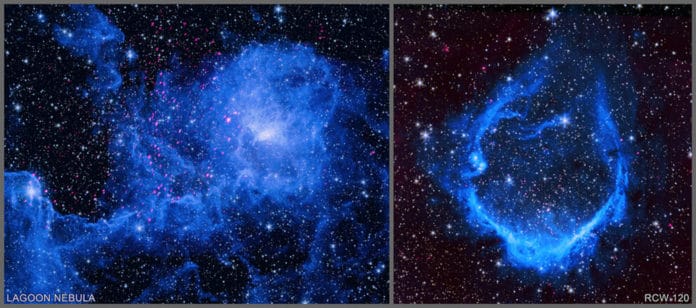Solar-type stars exhibit their highest levels of magnetic activity during their early convective pre-main-sequence (PMS) phase of evolution. The most powerful PMS flares, super-flares, and mega-flares have peak X-ray luminosities and energies.
In a recent study, scientists from Penn State outlined the link between very powerful flares, or outbursts, from youthful stars and the impact they could have on planets in orbit. By conducting the survey of star-forming regions in X-rays, scientists concluded that the relationships between celebrities and the planets around them — including the Sun and the Earth — may be even more complex than previously thought.
Konstantin Getman, research professor of astronomy and astrophysics at Penn State who led the study, said, “In some ways, this is our ultimate origin story: How the Earth and solar system came to be.”
The data for the study was gathered from NASA’s Chandra X-ray Observatory. Scientists examined data of more than 24,000 stars in 40 different star-forming regions. They captured flares from over a thousand stars that were so energetic than the most powerful flare ever observed by modern astronomers on the Sun, the “Solar Carrington Event” in 1859.
All these flares have different masses, including those similar to the Sun. They were observed at all different stages in the evolution of young stars, ranging from early stages when the star is heavily embedded in dust and gas and surrounded by a large planet-forming disk to later stages when planets would have formed, and the disks are gone.
Scientists estimated that the age of stars to be less than 5 million years, compared to the Sun’s age of 4.5 billion years.
The group tracked down several super-flares that happen each week for every young star, found the middle value of over the whole sample and around two mega-flares each year.
Co-author Eric Feigelson, a distinguished senior scholar and professor of astronomy and astrophysics and statistics at Penn State, said, “We want to know what kinds of impact — good and bad — these flares have on the early lives of planets. Flares this powerful can have major implications.”
These giant flares may sometimes take away from planets already formed by blasting any atmospheres with powerful radiation. It might be the result of their complete evaporation and destruction in less than 5 million years.
When scientists performed detailed modeling of 55 bright, super- and mega-flares, they found that most flares look like long-lasting flares seen on the Sun that produce ‘coronal mass ejections. The Solar Carrington Event involved such an ejection.
The properties of the flares, such as their brightness and frequency, are the same for young stars with and without planet-forming disks.
This work is likewise significant for understanding the actual flares. The team tracked down that the properties of the flares, like their brightness and frequency, are something similar for young stars with and without planet-forming disks. This suggests that the flares are possible like those seen on the Sun, with loops of a magnetic field having both impressions on the star’s surface, rather than one anchored to the disk and one to the star.
Co-author Gordon Garmire from the Huntingdon Institute for X-ray Astronomy in Huntingdon, Pennsylvania, said, “We’ve found that these giant flares are like ones on the Sun but are just greatly magnified in energy and frequency, and the size of their magnetic loops. Understanding these stellar outbursts may help us understand the most powerful flares and coronal mass ejections from the Sun.”
Journal Reference:
- Konstantin V. Getman et al. X-ray Super-Flares From Pre-Main Sequence Stars: Flare Energetics And Frequency. arXiv:2105.04768
